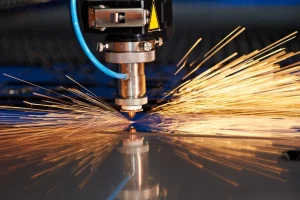Mastering welding involves grasping the wire feeder technology’s significance. Precise wire electrode feeding is essential for top-notch welds. Innovations in wire feeder systems boost productivity, operator control, and cost efficiency. Exploring wire feeder intricacies reveals how to optimize welding processes and master wire feed speed control. What does the future hold for wire feeder innovation, and how will new technologies shape welding?
Key Takeaways
- Wire feeder technology is a crucial component of welding systems, ensuring consistent and high-quality welds by feeding wire electrodes at a controlled rate.
- A thorough understanding of wire feeder technology optimizes welding processes, highlighting the importance of precise wire feed control for quality welds.
- Advanced feeder systems improve weld quality, increase productivity, and reduce costs, streamlining welding processes and boosting product consistency.
• Mastering wire feed speed control is critical for achieving optimal weld quality, as it affects weld penetration, fusion, and appearance. - Future innovations in wire feeder technology will integrate digitalization, automation, and AI to enable real-time monitoring and predictive maintenance, enhancing overall welding quality and efficiency.
Wire Feeder Technology Explained
Wire feeder technology, a crucial component of welding systems, refers to the device responsible for feeding wire electrodes at a controlled rate to guarantee consistent and high-quality welds. This technology guarantees precise wire feed rates, minimizing weld defects and maximizing productivity. By understanding the wire feeder technology explained, welders can optimize their welding processes for superior results.
Understanding Welding Wire Feeders
To further optimize welding processes, a thorough understanding of welding wire feeders is necessary, as these devices play a vital role in regulating wire feed rates and ensuring consistent weld quality. Wire feeder technology explained in this situation highlights the importance of precise wire feed control, which directly impacts the overall welding performance and final product quality.
Benefits of Advanced Feeder Systems
Three key advantages of advanced feeder systems are improved weld quality, increased productivity, and advanced operator control, ultimately leading to reduced costs and improved overall efficiency. By utilizing wire feeder technology explained in modern welding applications, manufacturers can streamline their processes, reduce waste, and boost product consistency. This results in significant cost savings and improved customer satisfaction.
Mastering Wire Feed Speed Control
Accurate control of wire feed speed is critical to achieving the best weld quality, as it directly affects the weld’s penetration, fusion, and overall appearance, making it an essential aspect of wire feeder technology explained in modern welding applications.
- Consistent feed speed guarantees uniform weld deposition
- Optimized feed speed reduces weld porosity and inclusions
- Precise control allows the welding of thin or sensitive materials
- Advanced wire feeder systems provide real-time speed monitoring
Future of Wire Feeder Innovation
As the welding industry continues to evolve, wire feeder technology is poised to take a significant leap forward, driven by advancements in digitalization, automation, and artificial intelligence. Wire feeder technology explained will integrate with Industry 4.0 principles, enabling real-time monitoring, predictive maintenance, and optimized welding processes, ultimately enhancing the overall quality and efficiency of welding operations.

Frequently Asked Questions
Can Wire Feeder Technology Be Used With Other Welding Processes?
While wire feeder technology is primarily associated with Gas Metal Arc Welding (GMAW) and Flux Cored Arc Welding (FCAW), it can be adapted for use with other welding processes, such as Gas Tungsten Arc Welding (GTAW) and Shielded Metal Arc Welding (SMAW).
How Do I Troubleshoot Common Wire Feeder System Errors?
To troubleshoot common wire feeder system errors, identify and address issues with wire feed rate, voltage, and tension, and inspect for wire tangles, kinks, or blockages, ensuring proper system calibration and maintenance.
Are There Specific Wire Feeder Systems for Aluminum Welding?
Specific wire feeder systems are designed for aluminum welding, taking into account the unique properties of aluminum, such as its high thermal conductivity and reactivity, to guarantee excellent welding performance and minimize defects.
Can I Use a Wire Feeder With a Generator or Inverter?
Yes, you can utilize a wire feeder with a generator or inverter, but make certain the power source delivers a stable voltage and frequency to uphold a consistent welding process and prevent equipment damage.
Are Wire Feeder Systems Compatible With Robotic Welding Cells?
Yes, wire feeder systems are compatible with robotic welding cells, as they can be integrated to guarantee smooth wire feeding and precise control, optimizing welding performance and efficiency in automated welding processes.
Conclusion
In summary, wire feeder technology is a pivotal component of welding systems, enabling controlled and precise wire electrode feeding for consistent, high-quality welds. Advanced feeder systems improve productivity, operator control, and cost efficiency. Mastering wire feed speed control is essential for ideal weld quality. As digitalization, automation, and AI progress, wire feeder innovation is positioned to revolutionize welding processes, facilitating enhanced monitoring, predictive maintenance, and operational efficiency.
You May Also Like:

